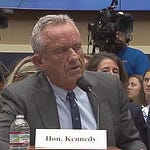In recent days, reports surfaced that the Trump administration had floated a $30 billion proposal to Iran. The plan, if real, would have involved U.S. support for a civilian nuclear program in Iran in exchange for a complete end to uranium enrichment. That would mean giving up even low-level enrichment, such as the 3.7% threshold widely accepted for peaceful energy use. The offer resembled the type of agreement made between the U.S. and North Korea in the 1990s. That agreement began with promises of reactors and normalisation, then collapsed after the “usual” U.S. domestic opposition gutted its implementation. North Korea responded by restarting its program and eventually conducting a nuclear test in 2006. It now has an formidable arsenal, and nobody dares.
Whether the Iran proposal was officially made remains unclear. Trump denied the report publicly and attacked media coverage. But at the same time, he posted statements suggesting he had been working on sanctions relief and other incentives for Iran. That contradiction has not been resolved. On the Iranian side, officials responded as if the proposal had indeed been circulated. Foreign Minister Abbas Araghchi stated that Iran had not agreed to any talks and had no intention of entering negotiations. He pointed to recent U.S. and Israeli military actions as evidence that the diplomatic channel had been discredited.
That line has remained firm so far, hopefully it stays that way. Iran rejected the meeting Trump had suggested might take place in Oman. Abbas Araghchi emphasised that no groundwork had been laid for renewed talks, and he accused the U.S. of undermining diplomacy through force. He made it clear that Iran would take “any steps” necessary to defend its sovereignty. In the context of ongoing IAEA inspections, which have clearly failed to protect Iranian facilities from attack, that phrase now carries more weight than before.
Iran has suspended cooperation with the IAEA and is holding the agency’s director personally responsible for the exposure of its nuclear infrastructure. accused Rafael Grossi of providing cover for the bombing of monitored facilities. The language used in those statements was direct and pointed, they did not mince their words. There was no pretense that a working relationship remained in place. Iran now views IAEA monitoring as a liability, and it is, as secret Iranian nuclear facilities information was found on the hacked Israel documents in Iran's possession. Its conclusion is that transparency has brought vulnerability, a serious existential danger to security.
This is not the first time Iran has tried to engage through official frameworks. What is now apparent is that all these so called international bodies are nothing but an extension of western hegemony. The JCPOA was signed in 2015, after over a decade of talks, and imposed severe limits on Iran’s nuclear program. It was backed by the United States and endorsed by the UN Security Council. That agreement was then unilaterally abandoned by the U.S. under the Trump administration. What followed was a steady return to enrichment by Iran, accompanied by rising regional tensions and sporadic military incidents.
Iran now enriches uranium up to 60%, well beyond civilian use levels. That development has often been explained as a pressure tactic to force renewed talks. But there is another way to understand it. Inside Iran, there is no single consensus on nuclear weapons policy. Some factions favor a weapons program, whilst others remain committed to the line set by Ayatollah Khamenei’s past religious ruling against it. The 60% enrichment level looks less like strategy than compromise. It satisfies neither side but keeps both factions within the decision-making structure.
Military strikes and political sabotage may have now tipped that balance. Statements from senior Iranian figures are no longer framed within the language of diplomatic process. Instead, they are intertwined with warnings. Iran’s officials now speak of “real capabilities” and the end of illusions about Iran’s power. They demonstrated their capabilities, pulverized Israel, were about to pulverise US military bases, when Trump called for a ceasefire. So the Iranians are sending clear signals. However, it is my belief that Iran should have established deterrance once and for all.
Outside observers have drawn comparisons to North Korea’s path. Arnaud Bertrand, writing on this subject, summarised the lesson as follows: North Korea rejected inspections, left the Non-Proliferation Treaty, and developed nuclear weapons in secret. That decision made it virtually untouchable. Iran chose to do the opposite, and allowed inspections, joined agreements, and accepted monitoring. That cooperation has now been exploited and used to surveil, identify and destroy its facilities. This was the result of reckless exposure, to even belief the West can be trusted.
Bertrand argued that the diplomatic track itself has become a serious liability. Iran had engaged in negotiations in good faith but only to see them used as cover for coordinated attacks. It had accepted technical monitoring that later provided guidance for targeted strikes. Iran honored agreements that were not honored in return, zero reciprocation. From that perspective, the incentives for Iran to leave the NPT, end all cooperation with the IAEA, and pursue a nuclear deterrent without outside input are stronger than ever.
Iran must chose that direction, that is the most effective way to demonstrate to the wworld that there is no misunderstanding or miscalculation. The usual pattern already visible in the past years, was that each time Iran moved toward diplomacy, it was met with military escalation. Each time it has made concessions, Iran received nothing in return other than more confrontation. The end result each time the cycle ends, is that its position is weaker than before. At some point, a shift in policy became inevitable.
Iran may still weigh its options, we see only one option, decouple from the bullies. Yes, the language has changed, but the other side only understands one language, emphatic defeat, so Iran should nolonger speak of limits. Iran may not have formally announced its next steps, but the we notice the official language has shifted away from cooperation and restraint. References to international frameworks have disappeared, replaced by repeated emphasis on national sovereignty, independent action, and the right to pursue any course deemed necessary for security. Where past statements signaled limits and conditional engagement, recent declarations now focus on capability, deterrence, and irreversible consequences.
A shift toward nuclear weapons by Iran would not mark a break with past policy, but rather the outcome of a drawn-out process shaped by outside pressure. The current direction traces back to years of stalled diplomacy, broken agreements, and military strikes carried out under the cover of talks. Decisions made in Washington and Tel Aviv have played the central role in closing off non-military options. What now looks like escalation is better understood as the end-point of a course that was set long before the present moment.
Those who have blocked every agreement and undermined every treaty will not admit responsibility. They will say they were right all along, and say Iran was never sincere. They will write op-eds explaining why diplomacy was naive and military action is the only answer. The outcome will be treated as proof of foresight, without admitting failure. The fact that their actions brought it about will not be acknowledged, they will twist and weave in any possible trick to blame it on Iran.
To conclude, judging from the actions of Iran, every indication is that it has stopped talking and cooperating. Since the ceasefire, Iran has halted indirect negotiations with the United States, suspended cooperation with the IAEA, and made clear through official channels that it no longer views diplomatic engagement as a viable path. Israeli and U.S. strikes during and after the diplomatic window dismantled several monitored facilities, undercutting the value of transparency and exposing the physical vulnerability of declared sites. Public statements from Iranian officials now emphasise retaliation, sovereignty, and the right to respond without external constraint. If Iran intends to pursue a long-lasting deterrent, the path forward is already visible in precedent. That would require ending all cooperation with international monitors, exiting the Non-Proliferation Treaty, developing weapons capability away from public view, and securing protection from cyber and physical penetration. A deterrent of that kind cannot be built under inspection, cannot be delayed through negotiation, and cannot be maintained with partial steps.
The past two weeks have clarified what the current approach has delivered, and what the next phase will demand.
If you think my voice should be heard louder then PLEASE support by becoming a PAID SUBSCRIBER. I’m here for your raw, straight, and dedicated analyses. Your support is appreciated. Thank you.
buymeacoffee.com/ggtv













Share this post